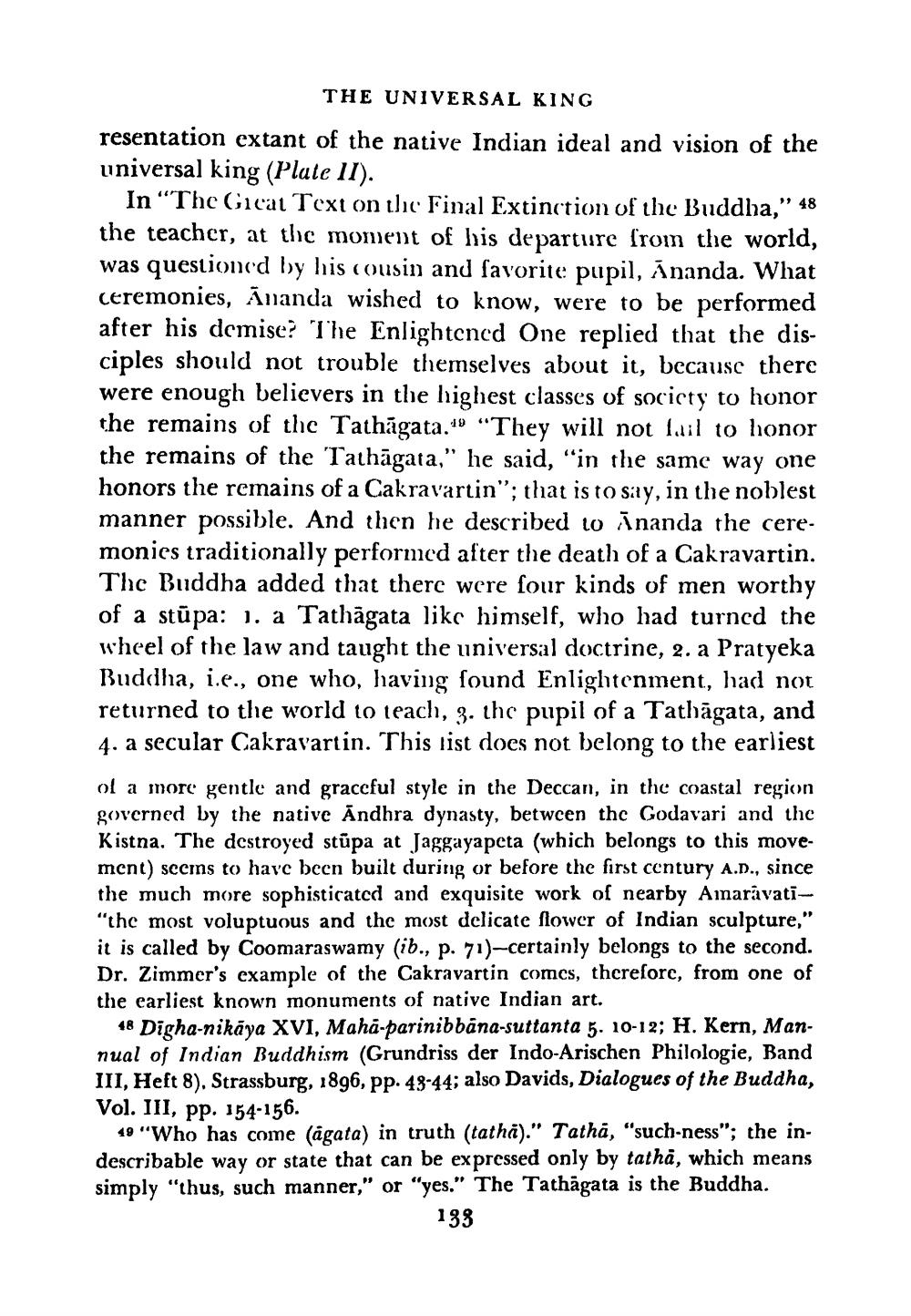________________
THE UNIVERSAL KING resentation extant of the native Indian ideal and vision of the universal king (Plate II).
In "The Gical Text on the Final Extinction of the Buddha," 48 the teacher, at the moment of his departure from the world, was questioned by his cousin and favorite pupil, Ananda. What ceremonies, Ananda wished to know, were to be performed after his demise? The Enlightened One replied that the disciples should not trouble themselves about it, because there were enough believers in the highest classes of society to honor the remains of the Tathāgata.19 "They will not fail to honor the remains of the Tathāgata," he said, “in the same way one honors the remains of a Cakravartin"; that is to say, in the noblest manner possible. And then he described 10 Ānanda the ceremonies traditionally performed after the death of a Cakravartin. The Buddha added that there were four kinds of men worthy of a stūpa: 1. a Tathāgata like himself, who had turned the wheel of the law and taught the universal doctrine, 2. a Pratyeka Buddha, i.e., one who, having sound Enlightenment, had not returned to the world to teach, 3. thc pupil of a Tathāgata, and 4. a secular Cakravartin. This list does not belong to the earliest of a more gentle and graceful style in the Deccan, in the coastal region governed by the native Andhra dynasty, between the Godavari and the Kistna. The destroyed stupa at Jaggayapeta (which belongs to this movement) seems to have been built during or before the first century A.D., since the much more sophisticated and exquisite work of nearby Amaravati"the most voluptuous and the most delicate flower of Indian sculpture," it is called by Coomaraswamy (ib., p. 71)-certainly belongs to the second. Dr. Zimmer's example of the Cakravartin comes, therefore, from one of the earliest known monuments of native Indian art.
18 Digha-nikāya XVI, Mahā-parinibbana-suttanta 5. 10-12; H. Kern, Mannual of Indian Buddhism (Grundriss der Indo-Arischen Philologie, Band III, Heft 8). Strassburg, 1896, pp. 43-44; also Davids, Dialogues of the Buddha, Vol. III, pp. 154-156.
19 "Who has come (ågata) in truth (tatha)." Tatha, "such-ness"; the indescribable way or state that can be expressed only by tatha, which means simply "thus, such manner," or "yes." The Tathāgata is the Buddha.
133




